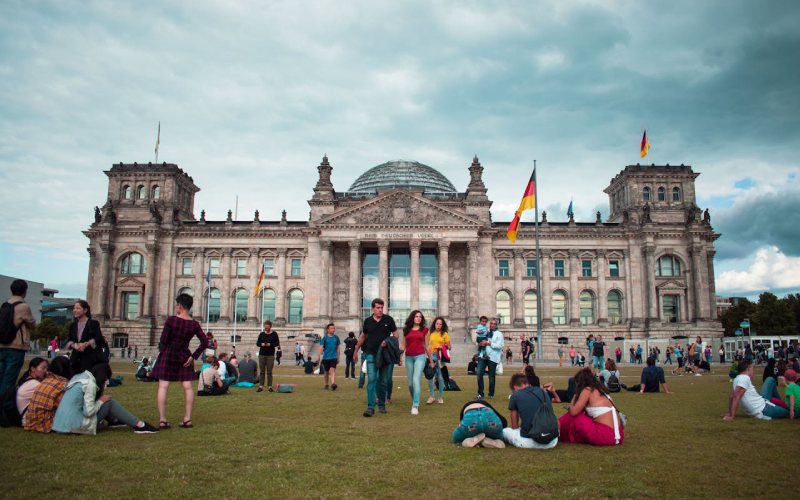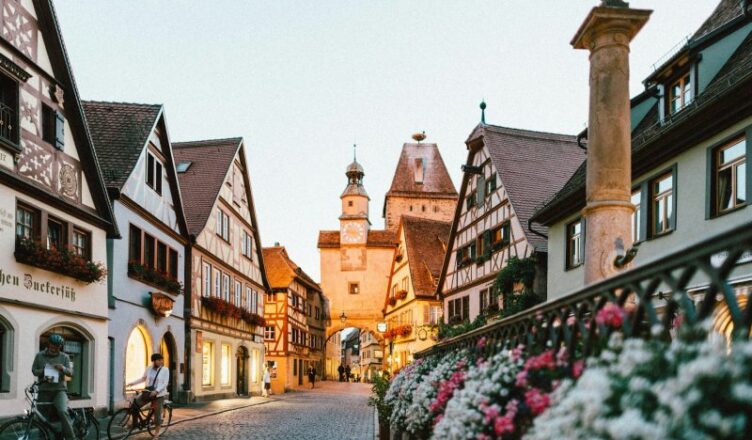Germany is a beautiful European country with diverse landscapes and vistas ranging from gorgeous plains to dense forests and steep mountains. Germany’s outskirts and smaller towns have a more beautiful landscape than the modern cities. Once you have finalized your German holiday itinerary, the next question is what to wear in Germany. In short, you should wear what you are comfortable in. After all, you cannot enjoy your holiday exploring the fascinating German landscapes if you are comfortable with your attire. Blending with the local culture is always a great advantage. . Every season brings its own set of demands when it comes to the dressing attire of individuals. Hence, knowing what to bring to Germany when planning a holiday is the gateway to a happy trip.
What to wear in Germany in summer

The summer season in Germany begins from June to August. This is a beautiful season to visit Germany. The temperature hovers between 20o-30oC. The ambiance oozes with leisure and relaxation while visiting mind-blowing castles, leafy green forests, beer gardens, and half-timbered towns. You can be welcomed by occasional light showers.
The season promotes tourism and wandering, so you should pack light and breathable clothing fabrics like linen or cotton. Your summer collection, including t-shirts, shorts, light trousers, and dresses, to keep you comfortable and cool throughout the day is the need of the hour and contributes to the core elements of what to wear in Germany during the summer season. Even though the days are quite warm, it can get slightly cooler in the evenings, especially after sunset. Hence, a light shawl, fleece jacket, or cardigan will do the trick. Foldable umbrellas or rain jackets are advisable to counter the sudden showers.
What to wear in Germany in spring
The spring season in Germany lasts three months, from March to May every year. One should be prepared for variable spring weather while enjoying your German vacation. Your attire will depend on many indulgences you look forward to during your German holiday.
During this season, you should avoid gym wear, yoga pants, and sweatpants. A loosely fitted trousers or jeans topped with a cardigan and a scarf is ideal for this season. The spring season in Germany can be difficult to plan as the weather changes drastically. Heavy downpours can be a sudden surprise and play a spoilsport if you are not prepared for the same. Scarfs are a great accompaniment to your attire, as they can help you plan for dynamic weather patterns. They, anyway, do not occupy a large space in your luggage. In fact, you will find both men and women wearing a lightweight knit scarf across all seasons.
What to wear in Germany in winter

The winter season in Germany starts from December to January. The weather conditions touch the freezing point. Snow is often quite common and unexpected, enhancing the beautiful landscape, especially in the mountainous regions. The weather can’t bring down the spirits of the Germans, as Christmas and New Year festivities are right up there.
Winter temperatures fluctuate quite a bit. Hence, be always ready to face the extreme at times, both in cold and warm climates. Inner thermal wear, warm sweaters, or jackets definitely feature what to bring to Germany this season. You will have to further insulate your body with a coat that provides warmth and is waterproof. The charming festivities of the season will surely cheer you up even though the temperatures can dip during January, the coldest month of the year.
Shoes to pack for Germany
Exploring tourist attractions and sightseeing is ideal in summer, spring, and fall. The cobbled streets decorate the landscape in the small towns of Germany. Hence, be sure to carry hiking or memory foam shoes or sneakers that will be comfortable for long walks or trails.
The winter season demands insulated boots that are warm and waterproof to handle the dynamic winter blues. A warm or thermal pair of socks is recommended to keep your feet warm and cozy.
Clothing Tips for women
Do not compromise on comfort and style, even though you may look to embrace the local culture. Linen or cotton pants, sundresses, light t-shirts, or blouses work well for any season. Depending on the climate, you can add a thermal layer under the dress and an overcoat to keep you warm. Chic sweaters, jackets, and jeans are ideal for cooler months.
Scarves go along in every season. They provide shade in the hotter months and add warm layers during the colder months. Depending on the climate, you can add layers of cardigans, jackets, and coats to keep yourself warm and cozy. Be prepared for this dynamic change, as weather patterns can change drastically without notice. So, add a thin-layered sweater to your luggage even when the weather is pleasant.
For accessories, you can carry a trendy backpack or tote that will be a travel buddy on your day trips. A pair of good shades and a hat can be ideal while exploring the German landscape.
Clothing Tips for men
The German population is obsessed with classic and well-groomed appearances. They prefer a casual pair of jeans, well-fitted trousers, chinos, or shorts for the warmer months, topped with a jacket or sweater for the colder months. Blending with the local culture, especially in terms of attire, will give you an edge while interacting with them.
The attire for fine dining or attending an opera or theatre performance would be smart-casuals. A blazer or coat with a crisp shirt and well-fitted jeans would be ideal. Overall, casual working would be fine if you are comfortable going around.
Conclusion –
The German population follows an international fashion trend for clothing across all seasons. The weather patterns change quite drastically. Hence, you should shield yourself from sudden changes. Comfortable footwear is another requirement, as you will walk longer distances, mostly over cobbled streets. Overall, every season has its flavors, and exploring and discovering new facets of German culture is the key. As a tourist, you should look to don with smart casuals that make you comfortable moving around.
